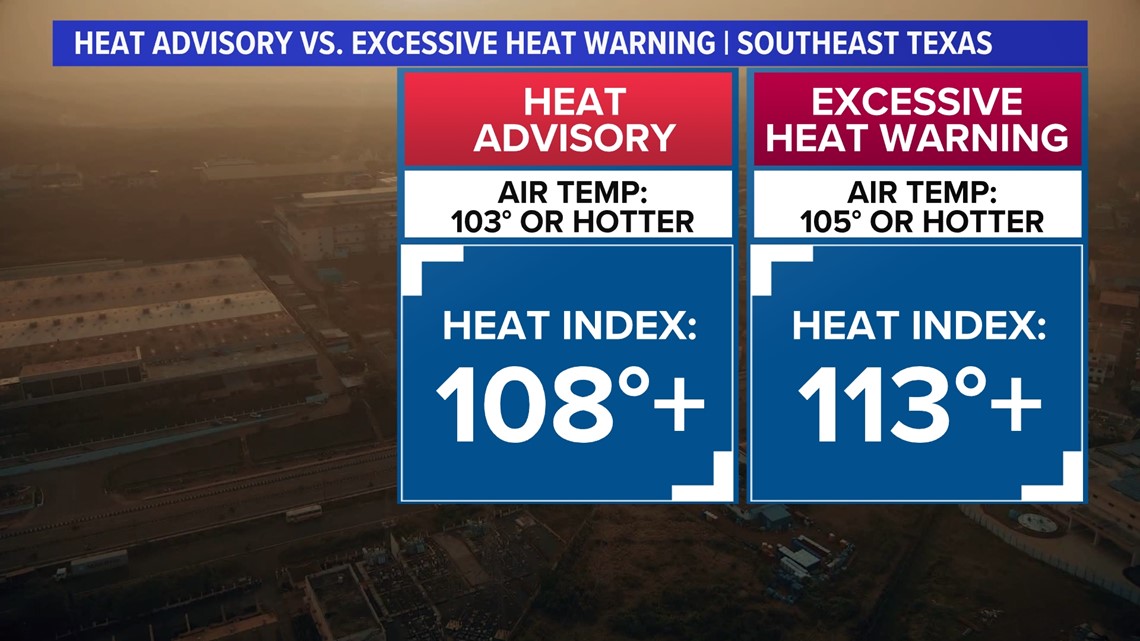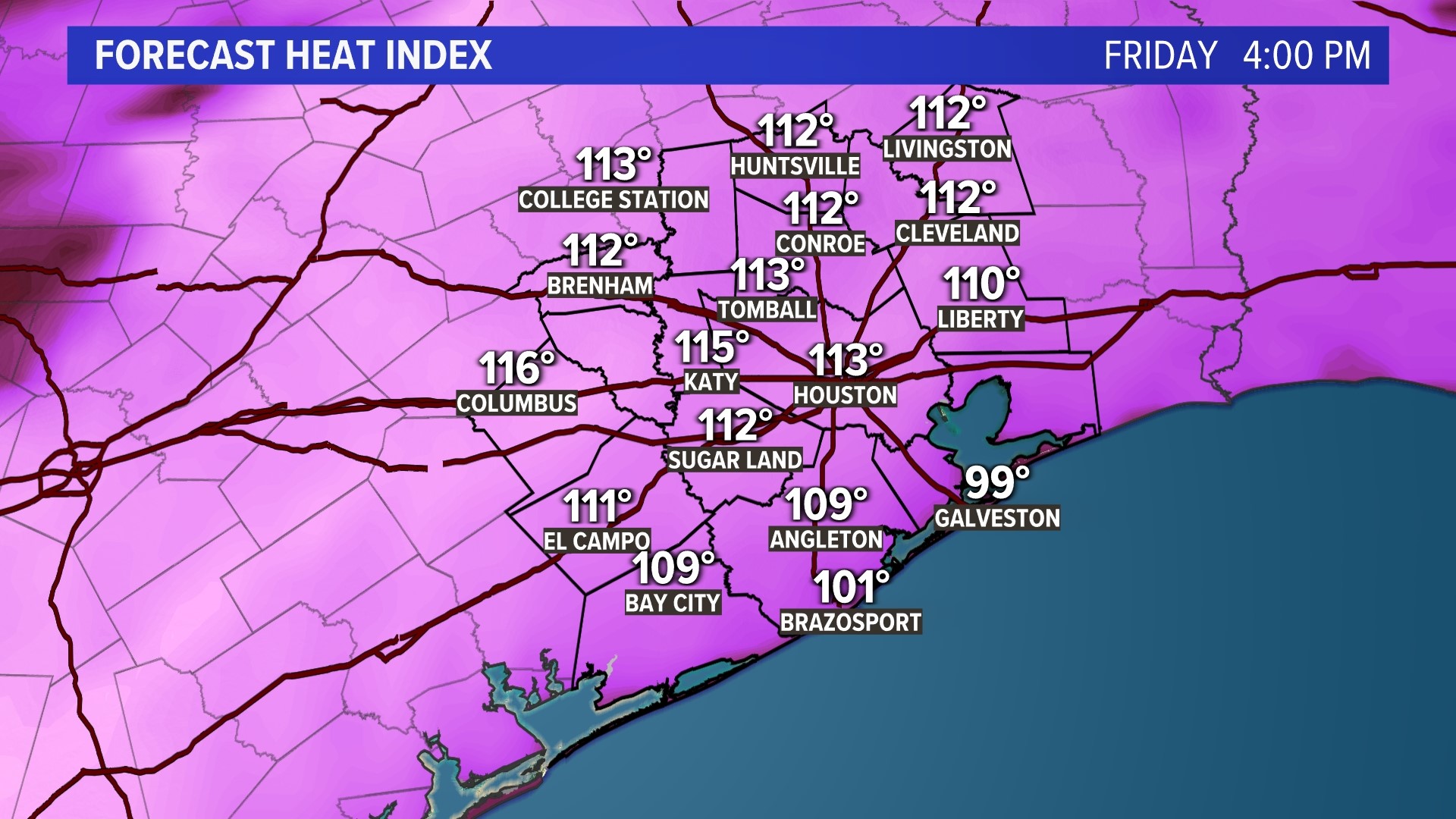HOUSTON — If you've lived in Houston long enough, you know that 95 degrees here feel vastly different than 95 degrees in the desert.
Our proximity to the Gulf of Mexico can make the summer heat unbearable at times across Southeast Texas, which can also be hard on the body. For that reason, forecasters use the "feels-like temperature," or heat index, to express exactly how the body responds to extreme temperatures and humidity.

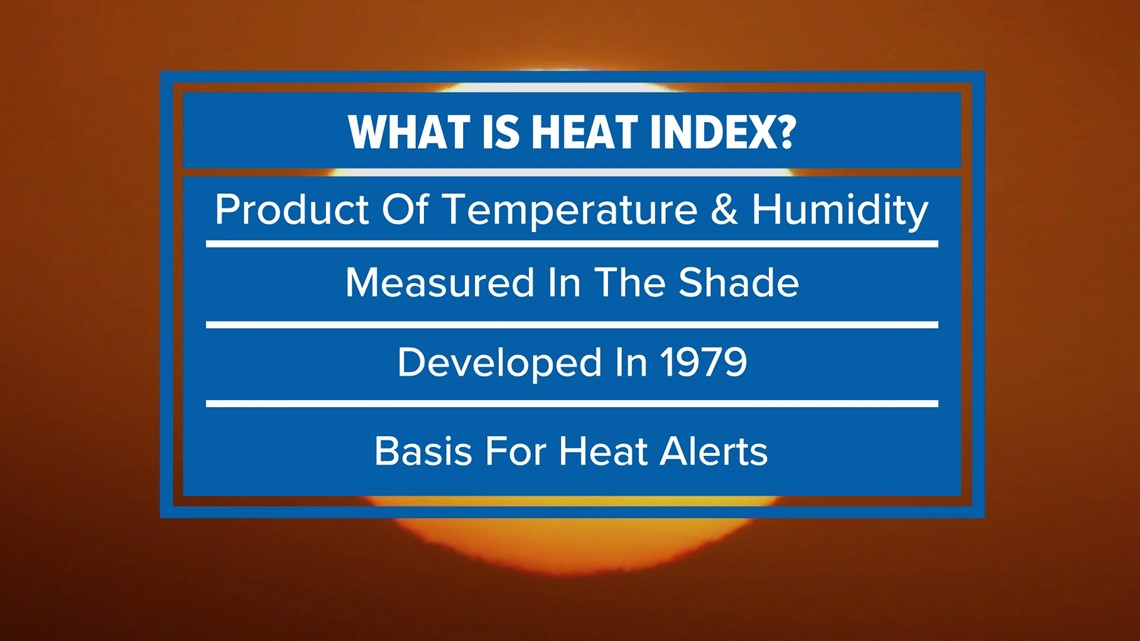
Both air temperature and heat index are measured in the shade.
Heat index is purely a product of humidity and air temperature. The higher the dew point (the measure of moisture in the atmosphere), the higher the feels-like temperature.

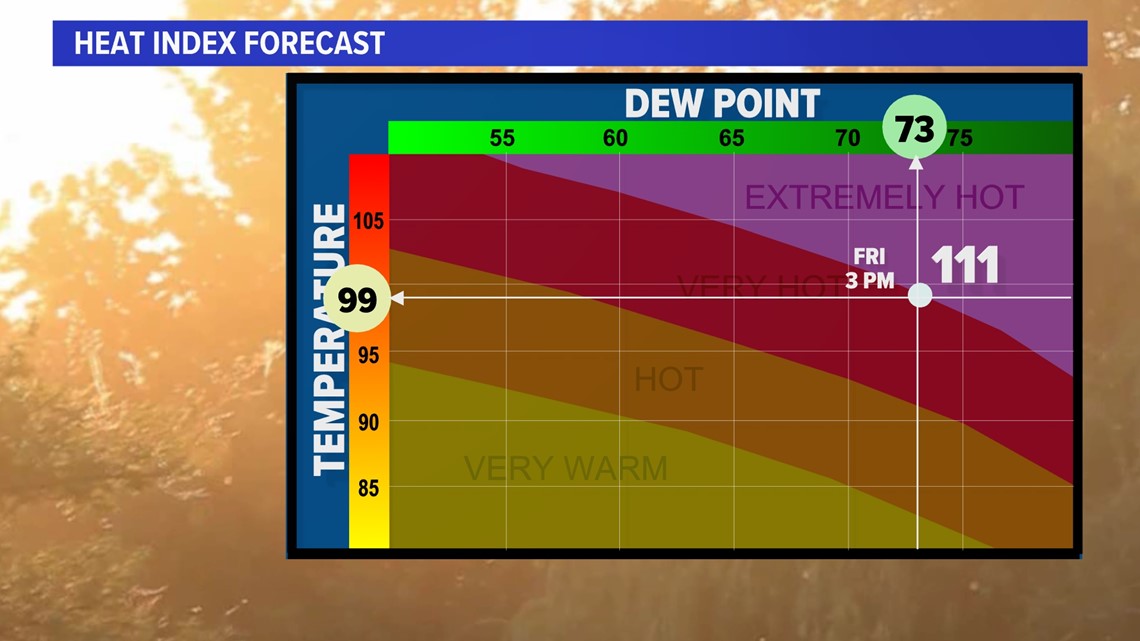
The concept of heat index is nothing new.
It was developed in 1979 as a way to estimate the temperature the body experiences with added humidity. Even though it's an estimation, it's not an arbitrary figure.
A long equation exists to determine heat index, with temperature and humidity being the main factors. However, to keep things simple, meteorologists use charts to show the values already recalculated.

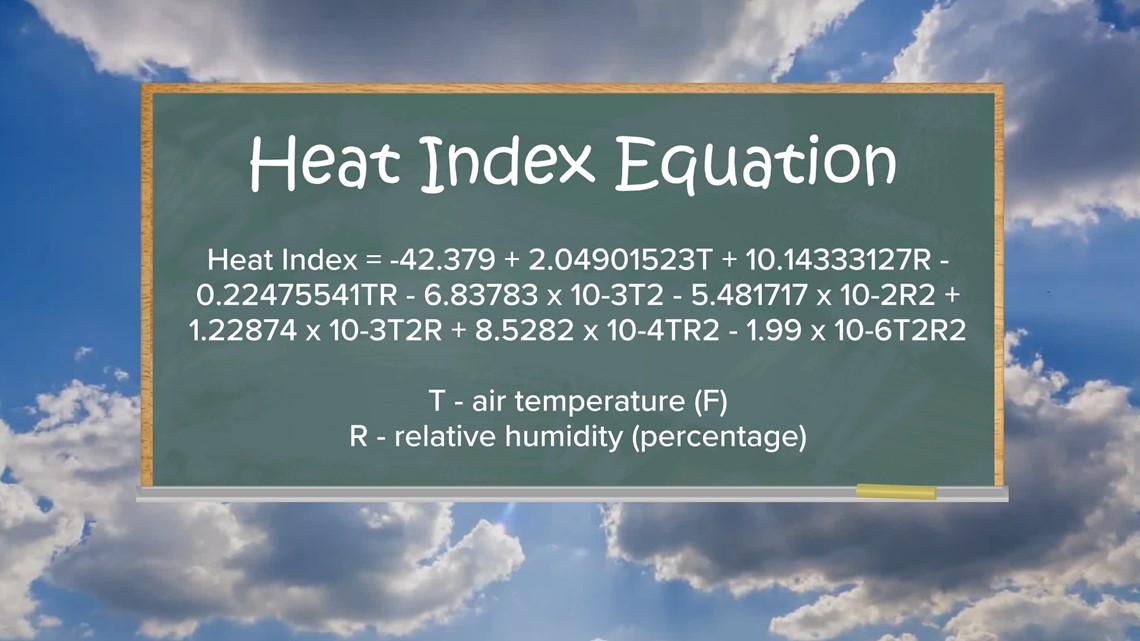
The reason this more accurately describes the impacts heat has on the body is because of how people cool themselves down.
When it's hot, people sweat. Our bodies depend on that sweat being evaporated to stay cool.
When the humidity is high, we aren't able to cool off as effectively, leading to more stress on the body. That stress mimics what our bodies would experience if the temperature were higher, hence the "feels-like" temperature (or heat index).
As a result, the National Weather Service uses heat index values as a basis for heat alert products.
In Houston, a heat advisory is issued for heat indices over 108 degrees and an excessive heat warning is for heat indices above 113 degrees.
In this long stretch of extreme heat, it is important to take it easy outdoors and to recognize the signs and symptoms of heat-related illnesses.

